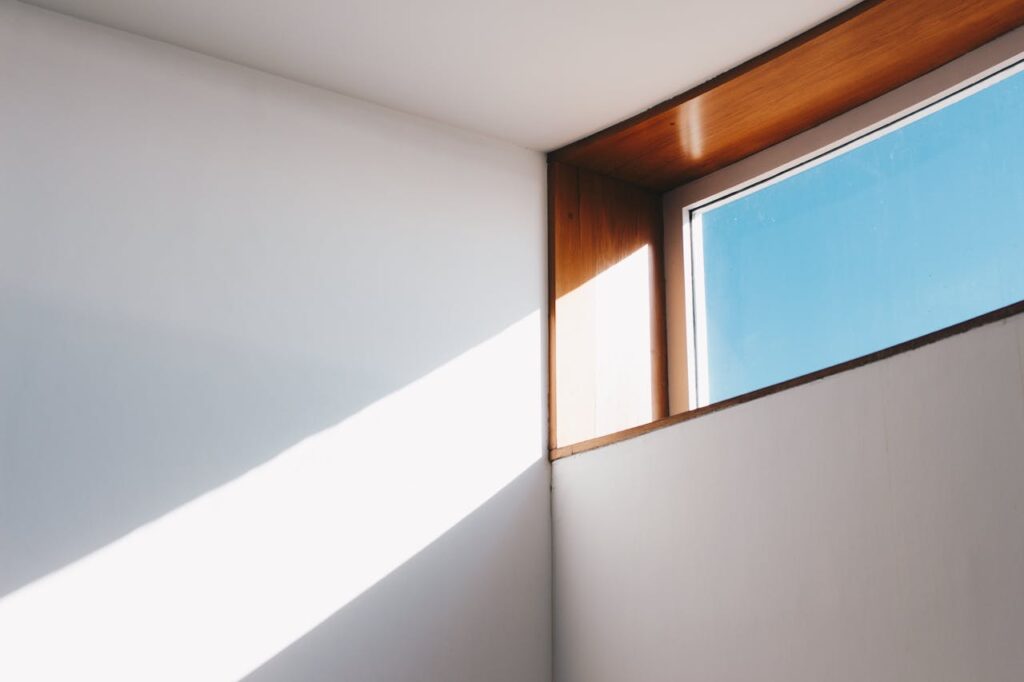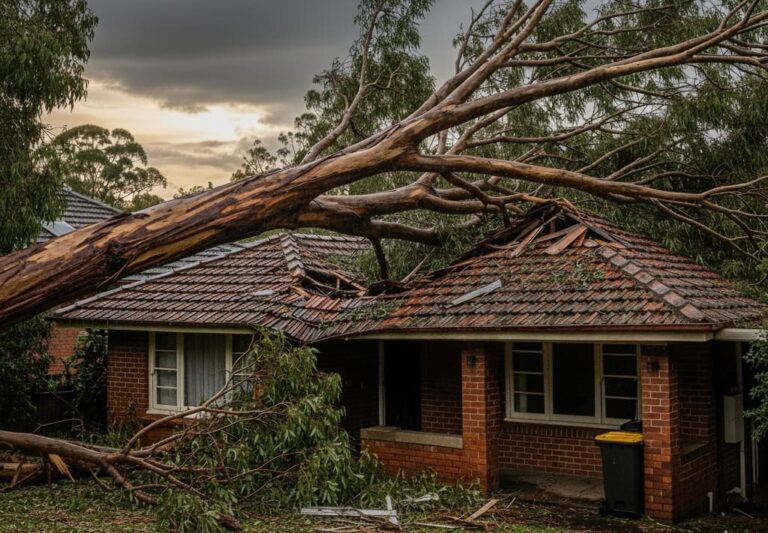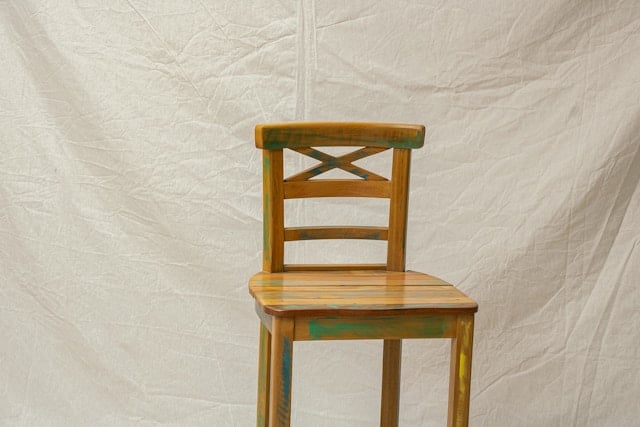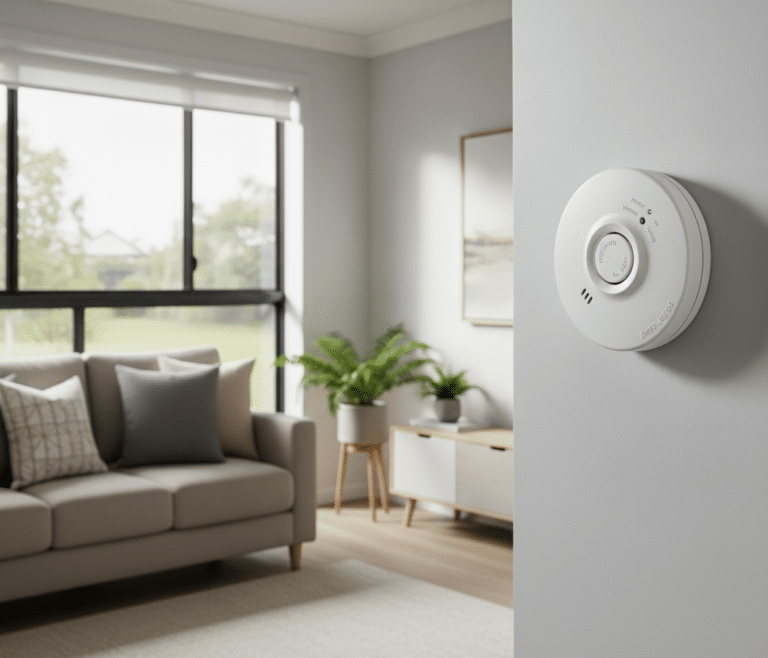If you’re an Australian homeowner, you know how extreme our weather can be. Scorching summers and chilly winters put a real strain on your energy bills. In fact, heating and cooling your home accounts for about 40% of your electricity costs.
Single-pane windows are a major weak point in your home’s defences against the weather. They let heat escape in winter and let the summer heat pour in. This means your air conditioner and heater work overtime, costing you money and leaving you uncomfortable.
This is where double glazing is especially valuable. Installing double-glazed windows can lower energy bills, improve insulation, and increase the value of your home. It’s a practical investment for both comfort and long-term savings.
What is Double Glazing?
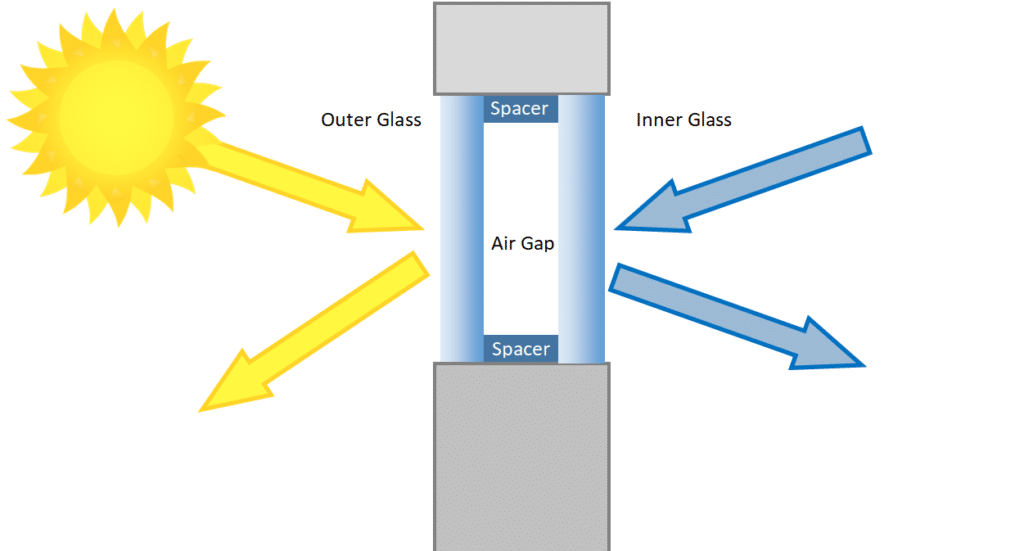
Double glazing is a type of window made with two panes of glass separated by a small gap, that acts as a form of highly effective insulation. This gap is usually 6-20mm wide and filled with dry air or a special gas like argon. It creates a barrier that stops heat from moving through the window.
A special strip called a spacer keeps the two panes apart and contains material that soaks up any moisture. This design helps to reduce heat loss in winter and keep homes cooler in summer. It also cuts down on noise from outside and can improve your home’s overall comfort.
Types of Double Glazing Frames
Double glazing comes in different frame materials, each with its own advantages. Choosing the right type depends on your home style, budget, and climate.
uPVC Windows
uPVC frames are popular in Australia because they are durable and require little maintenance. They don’t warp, rot, or need painting, making them a practical choice for busy homeowners. uPVC windows are available in a variety of colours and finishes to match your home.
Aluminium Windows
Aluminium frames are strong, lightweight, and resistant to corrosion. They are ideal for modern designs and large windows. Many Australian homeowners choose aluminium for its sleek look and long-lasting durability.
Timber Windows
Timber frames offer a natural, classic appearance and provide good insulation. They are often used in traditional or heritage homes. While timber requires more maintenance, it can add warmth and character to your home’s design.
Quick Comparison
| Attribute | uPVC | Timber | Aluminium |
| Durability | High | Medium to High | High |
| Maintenance | Low | High | Low |
| Cost | Low to Medium | High | Medium to High |
| Thermal Performance | High | High | Low (without thermal break) |
| Aesthetics | Modern, limited colours | Classic, natural | Modern, sleek |
Types of Glass Glazing
Beyond the frame, the type of glass in a double-glazed window is just as important. Different glass types serve specific purposes, from improving insulation to increasing security and privacy. Choosing the right glass depends on the needs of each window in your home.
- Low-E Glass: This has a special coating that lets light in but keeps heat from passing through. It’s like sunscreen for your windows and helps prevent condensation.
- Tone/Tinted Glass: Great for windows that cop a lot of direct sun. It cuts down on glare and heat but also reduces the amount of light coming in.
- Laminated Glass: Two panes stuck together with a tough plastic layer. If it breaks, the pieces stay stuck to the plastic instead of falling everywhere. Good for security.
- Toughened (Tempered) Glass: Heat-treated to be much stronger than regular glass. When it does break, it crumbles into small, safe pieces instead of sharp shards.
- Argon-Filled Glass: The gap between the panes is filled with argon gas instead of air. Argon is heavier than air, so it provides better insulation.
- Obscured Glass: Has a frosted or patterned surface for privacy while still letting light through. Perfect for bathrooms and bedrooms facing the street.
Choosing the right combination of frame material, glass type, and gas fill is not a one-size-fits-all decision. Each window’s orientation, location, and purpose should guide your choice. For example, a north-facing window in Melbourne may benefit from different glass than a west-facing window in Brisbane. Understanding these options helps homeowners make informed decisions and avoid generic solutions.
Understanding the Technical Stuff
When you get quotes, you’ll see some technical terms. Here’s what they mean in plain English:
U-Value This measures how much heat passes through a window. A lower U-value means the window is better at keeping heat in during winter or out during summer. In Australia, windows with a low U-value are usually preferred, as they help maintain a comfortable indoor temperature year-round.
R-Value: The R-value shows how well a window resists heat flow. It works the opposite way to the U-value—a higher R-value means the window has better insulation.
SHGC (Solar Heat Gain Coefficient): This number, between 0 and 1, shows how much solar heat passes through the glass. The right SHGC depends on your climate. A homeowner in a hot, sunny area like Perth should prioritize a low SHGC, while one in a colder region like Victoria may opt for a higher SHGC that lets the sun naturally warm your home.
Double Glazing vs. Secondary Glazing: Which is Right for You?
While double glazing is the most popular choice for new windows, another option is secondary glazing. This can be a smart and cost-effective solution for many homeowners, especially those in older homes or with heritage restrictions.
What is Secondary Glazing?
Secondary glazing involves adding a second pane of glass or clear acrylic to the inside of your existing window frame. It works in a similar way to double glazing by creating a sealed air pocket. However, it does not replace the original window.
Key Differences:
- Cost: Secondary glazing is generally much cheaper to install than replacing your entire windows with double-glazed units.
- Installation: The process is less disruptive and can often be done without major construction work or council approval.
- Performance: Double glazing typically offers superior thermal insulation and noise reduction. However, a well-installed secondary glazing system can still provide a significant improvement.
- Appearance: Secondary glazing may be more noticeable from the inside of your home. Double-glazed windows, on the other hand, are a seamless single unit that maintains the original look of your home’s exterior.
For a complete window replacement, double glazing is the best choice. However, if you are on a tighter budget or want to preserve the look of your existing windows, secondary glazing is a very worthwhile alternative to consider.
What Will It Cost?
Double glazing isn’t cheap, but it’s an investment. Prices vary wildly depending on what you choose. Secondary Glazing could start at $5,000 for basic add-on units to $20,000 for a complete replacement of about five windows.
The price depends on the window type, size, and frame material. uPVC is usually the most affordable, while timber can cost more due to its natural properties. Installation costs can vary across Australian regions, so it’s wise to get multiple quotes from licensed installers.
Although the upfront cost can be significant, double glazing saves money over time. Lower heating and cooling bills add up, and many Australian homeowners also benefit from government rebates or incentives for energy-efficient upgrades. In the long run, it’s an investment that pays off.
Installation and Maintenance
Proper installation and regular maintenance are key to getting the most from your double-glazed windows.
Choosing a Qualified Installer
It’s important to hire a licensed installer in Australia. A professional will ensure the windows are fitted correctly, sealed properly, and meet local building standards. When choosing an installer, ask about experience, certifications, and references. Getting multiple quotes can also help you find the best value.
Maintenance Tips
Double-glazed windows are generally low-maintenance, but a few simple steps can keep them in top condition:
- Clean the glass regularly with a soft cloth and mild detergent.
- Check the seals around the window to ensure they are intact.
- Inspect the frames for damage, especially timber frames that need occasional painting or sealing.
- If you notice condensation inside the panes, cracks, or difficulty opening windows, call a professional for inspection.
With proper care, double-glazed windows can last for decades while continuing to provide comfort, energy efficiency, and security for your home.
Final Thoughts
Double glazing is a significant investment in your home’s future. When done right, it delivers decades of improved comfort, lower energy bills, and increased property value.
The key is doing your homework. Understand what you’re buying, get multiple quotes, and choose a reputable installer. With the information in this guide, you’re well-equipped to make a smart decision that you’ll be happy with for years to come.
Remember: good windows are just one part of an efficient home. Consider them alongside proper insulation, draught sealing, and smart design choices for the best results. Looking for some other tips on energy efficacy? Check out our article on some simple ways lower your energy bills, as told by an energy expert.
